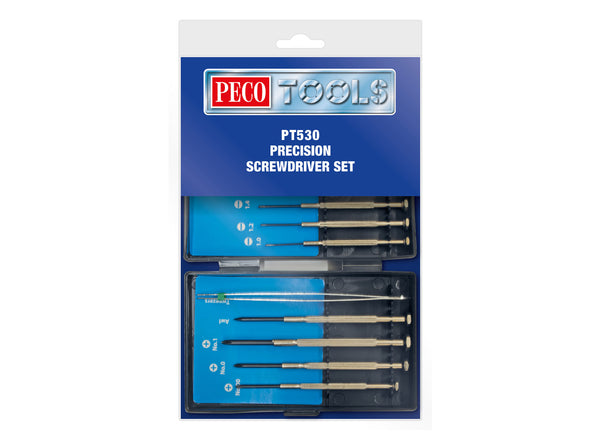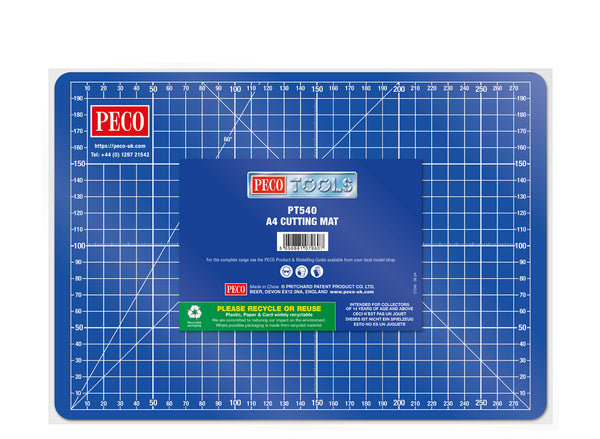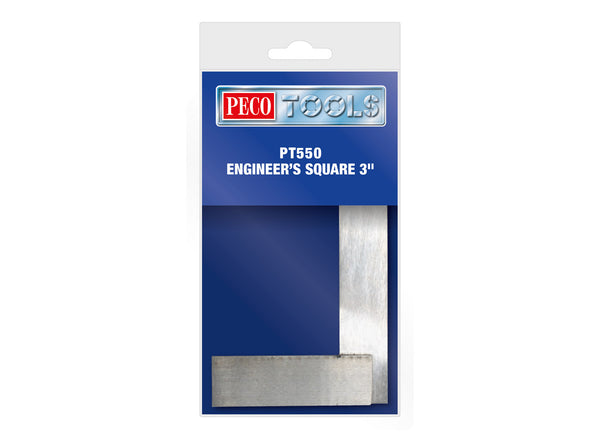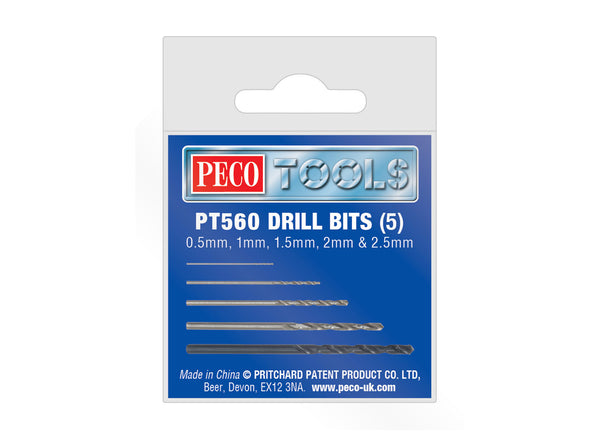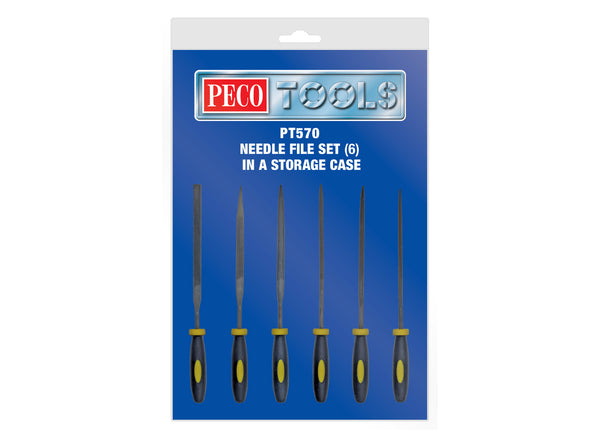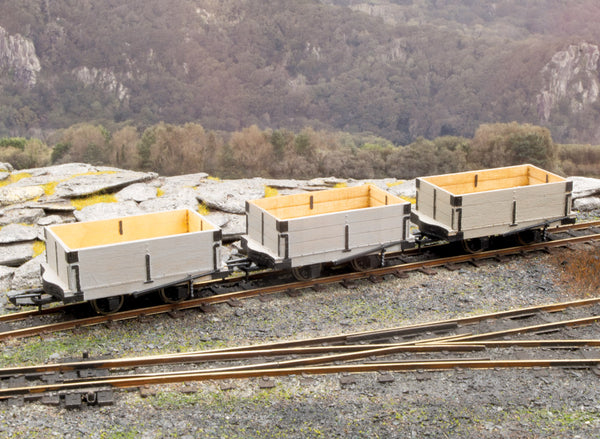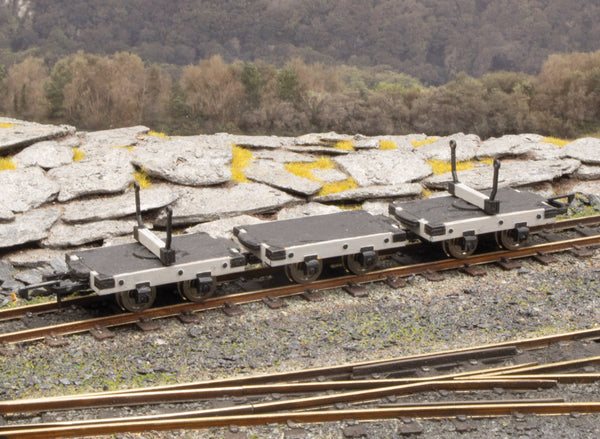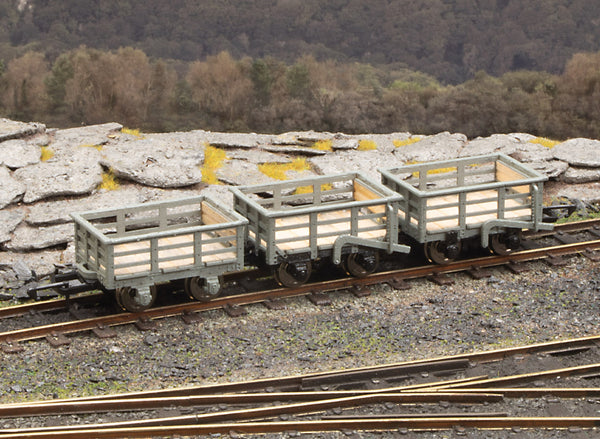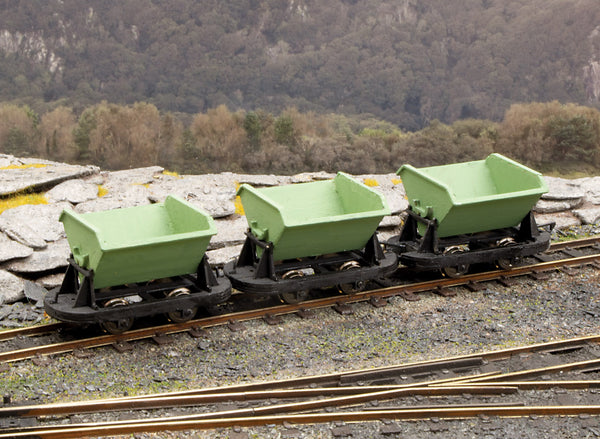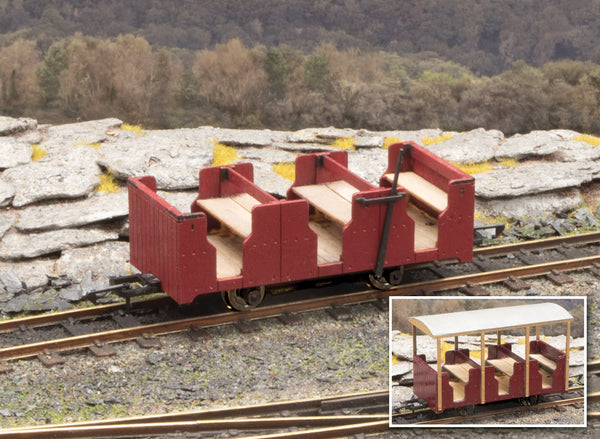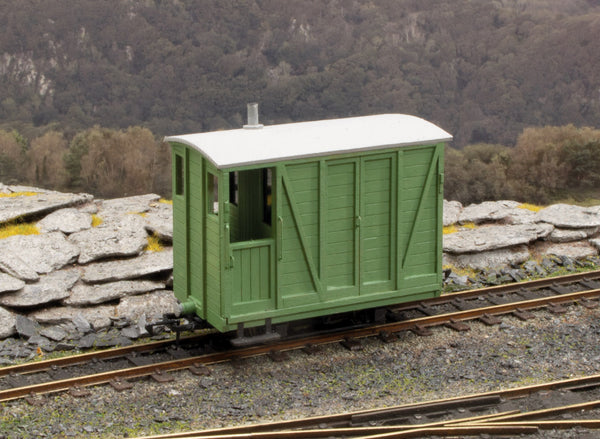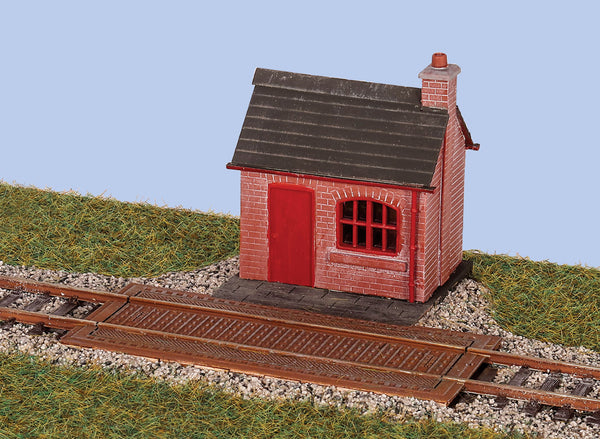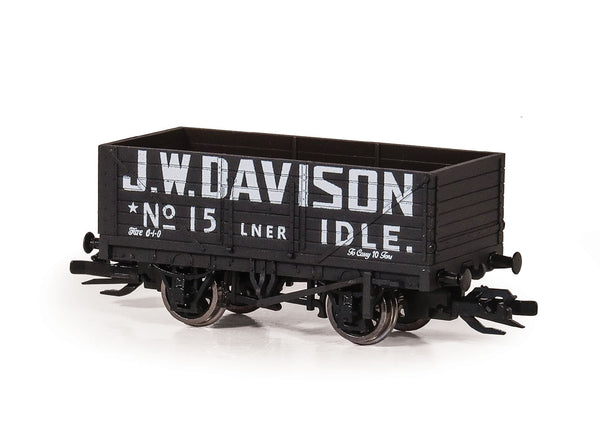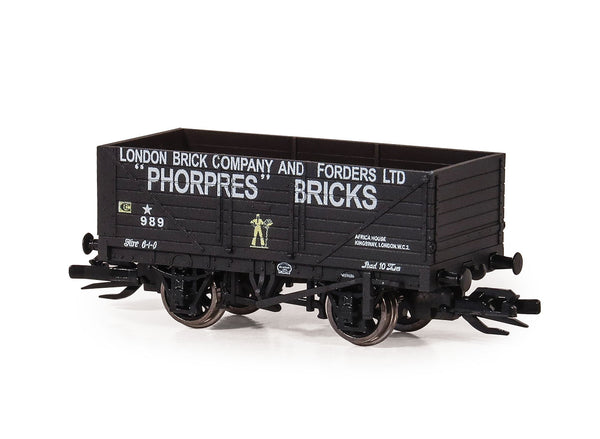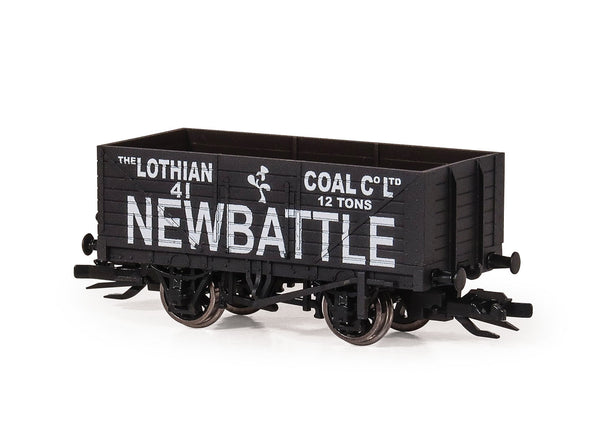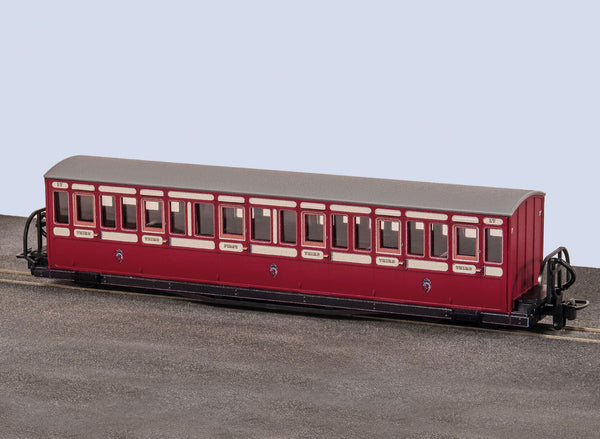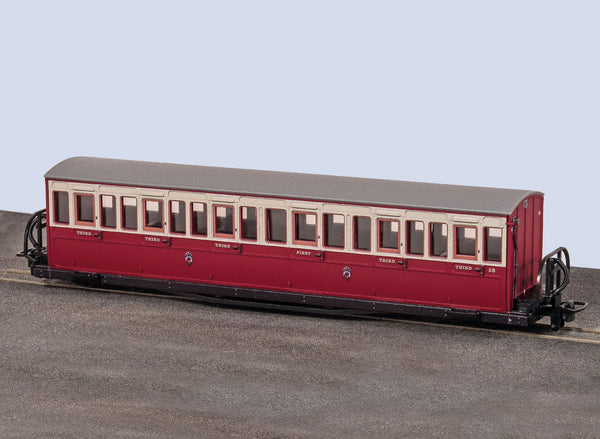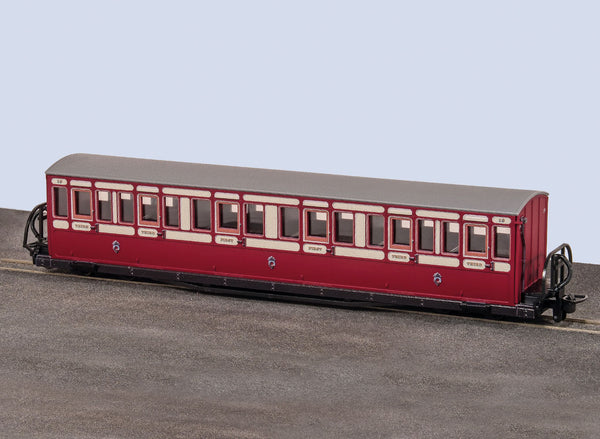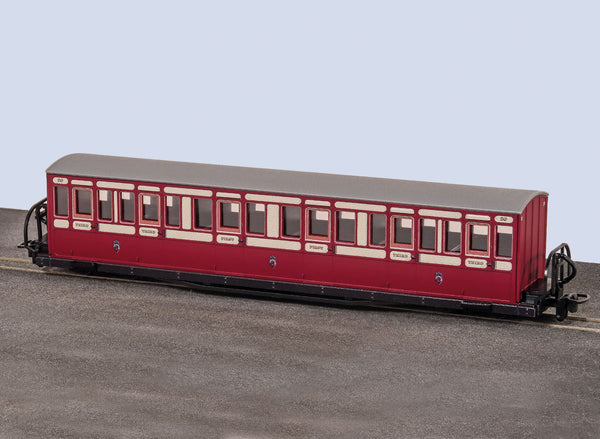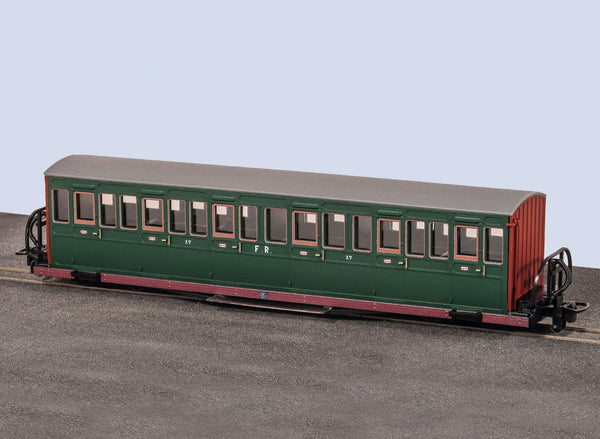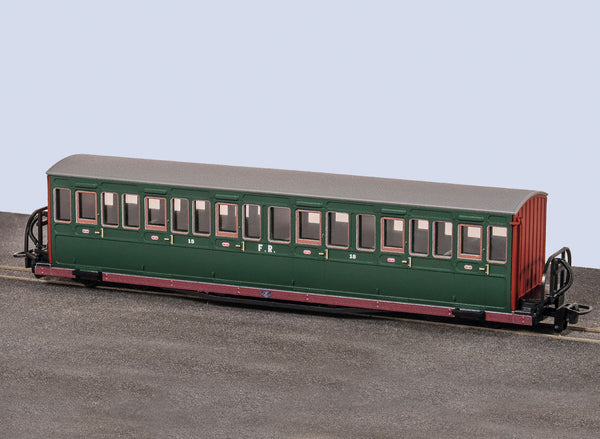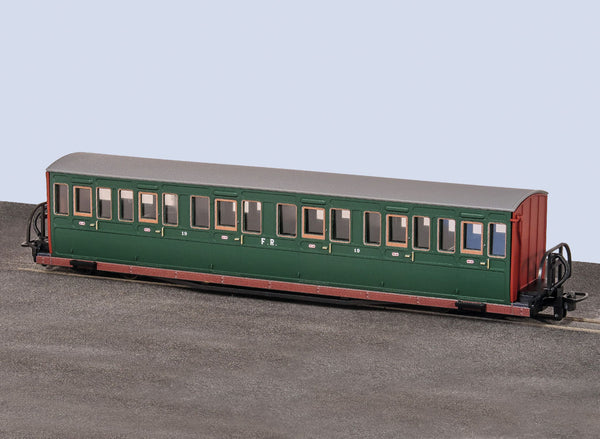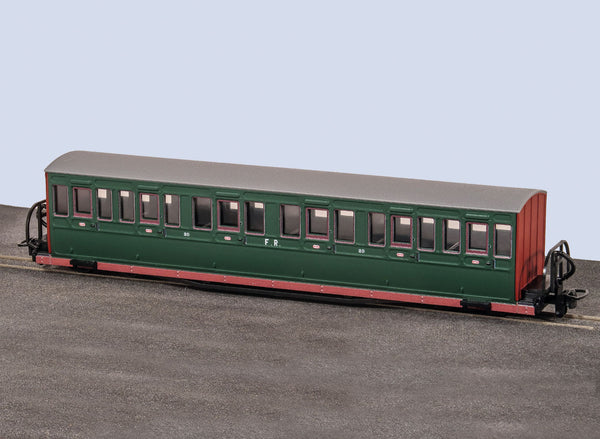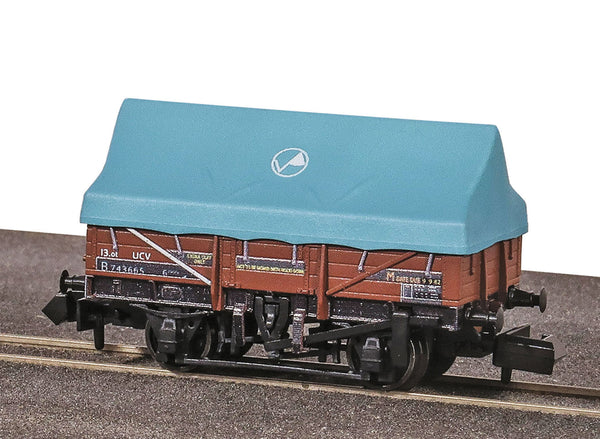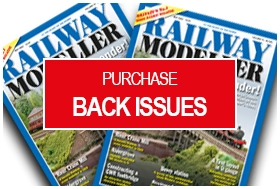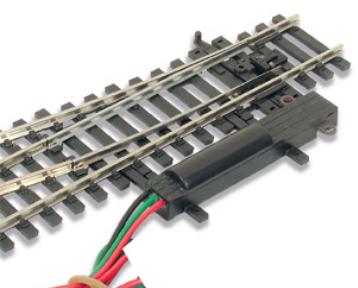DURCHSUCHEN SIE PECO-PRODUKTE
Stöbern Sie durch unser komplettes Produktportfolio.
163 Products Found
Kitbuilder-Werkzeugset
Ein speziell ausgewählter Werkzeugsatz von erfahrenen Modellbauern hier bei PECO für den Bausatzbau. Diese Werkzeuge sind für alle Modellbauer von entscheidender Bedeutung. Dazu gehört auch Expertenwissen in Form eines nützlichen Leitfadens, der Ihnen von den Experten von Railway Modeller zur Verfügung gestellt wird.
Beinhaltet:
- Anguss- und Kunststoffschneider
- Feine Pinzette
- Abbrechmesser mit 10 Ersatzklingen
- Set mit 4 Nadelfeilen
- Pinsel der Größe Nr. 0
- Pinsel der Größe Nr. 4
- A4-Schneidematte
- 150 mm/6 Zoll Stahlmaßstab
- Zeigt Ihnen, wie es geht: „Bausatzbau für Anfänger“
Kitbuilder-Werkzeugset
Ein speziell ausgewählter Werkzeugsatz von erfahrenen Modellbauern hier bei PECO für den Bausatzbau. Diese Werkzeuge sind für alle Modellbauer von entscheidender Bedeutung. Dazu gehört auch Expertenwissen in Form eines nützlichen Leitfadens, der Ihnen von den Experten von Railway Modeller zur Verfügung gestellt wird.
Beinhaltet:
- Anguss- und Kunststoffschneider
- Feine Pinzette
- Abbrechmesser mit 10 Ersatzklingen
- Set mit 4 Nadelfeilen
- Pinsel der Größe Nr. 0
- Pinsel der Größe Nr. 4
- A4-Schneidematte
- 150 mm/6 Zoll Stahlmaßstab
- Zeigt Ihnen, wie es geht: „Bausatzbau für Anfänger“
Kitbuilder-Werkzeugset
Ein speziell ausgewählter Werkzeugsatz von erfahrenen Modellbauern hier bei PECO für den Bausatzbau. Diese Werkzeuge sind für alle Modellbauer von entscheidender Bedeutung. Dazu gehört auch Expertenwissen in Form eines nützlichen Leitfadens, der Ihnen von den Experten von Railway Modeller zur Verfügung gestellt wird.
Beinhaltet:
- Anguss- und Kunststoffschneider
- Feine Pinzette
- Abbrechmesser mit 10 Ersatzklingen
- Set mit 4 Nadelfeilen
- Pinsel der Größe Nr. 0
- Pinsel der Größe Nr. 4
- A4-Schneidematte
- 150 mm/6 Zoll Stahlmaßstab
- Zeigt Ihnen, wie es geht: „Bausatzbau für Anfänger“
Kitbuilder-Werkzeugset
Ein speziell ausgewählter Werkzeugsatz von erfahrenen Modellbauern hier bei PECO für den Bausatzbau. Diese Werkzeuge sind für alle Modellbauer von entscheidender Bedeutung. Dazu gehört auch Expertenwissen in Form eines nützlichen Leitfadens, der Ihnen von den Experten von Railway Modeller zur Verfügung gestellt wird.
Beinhaltet:
- Anguss- und Kunststoffschneider
- Feine Pinzette
- Abbrechmesser mit 10 Ersatzklingen
- Set mit 4 Nadelfeilen
- Pinsel der Größe Nr. 0
- Pinsel der Größe Nr. 4
- A4-Schneidematte
- 150 mm/6 Zoll Stahlmaßstab
- Zeigt Ihnen, wie es geht: „Bausatzbau für Anfänger“
Kitbuilder-Werkzeugset
Ein speziell ausgewählter Werkzeugsatz von erfahrenen Modellbauern hier bei PECO für den Bausatzbau. Diese Werkzeuge sind für alle Modellbauer von entscheidender Bedeutung. Dazu gehört auch Expertenwissen in Form eines nützlichen Leitfadens, der Ihnen von den Experten von Railway Modeller zur Verfügung gestellt wird.
Beinhaltet:
- Anguss- und Kunststoffschneider
- Feine Pinzette
- Abbrechmesser mit 10 Ersatzklingen
- Set mit 4 Nadelfeilen
- Pinsel der Größe Nr. 0
- Pinsel der Größe Nr. 4
- A4-Schneidematte
- 150 mm/6 Zoll Stahlmaßstab
- Zeigt Ihnen, wie es geht: „Bausatzbau für Anfänger“
4-Rad-Wagenfahrgestell
0–16,5 Coach-Teile zur individuellen Anpassung der OR-31- und OR-32 Coach-Bausätze; auch für Selbstbauprojekte.
4-Rad-Wagenfahrgestell
0–16,5 Coach-Teile zur individuellen Anpassung der OR-31- und OR-32 Coach-Bausätze; auch für Selbstbauprojekte.
4-Rad-Wagenfahrgestell
0–16,5 Coach-Teile zur individuellen Anpassung der OR-31- und OR-32 Coach-Bausätze; auch für Selbstbauprojekte.
4-Rad-Wagenfahrgestell
0–16,5 Coach-Teile zur individuellen Anpassung der OR-31- und OR-32 Coach-Bausätze; auch für Selbstbauprojekte.
4-Rad-Wagenfahrgestell
0–16,5 Coach-Teile zur individuellen Anpassung der OR-31- und OR-32 Coach-Bausätze; auch für Selbstbauprojekte.
4-Rad-Wagenfahrgestell
0–16,5 Coach-Teile zur individuellen Anpassung der OR-31- und OR-32 Coach-Bausätze; auch für Selbstbauprojekte.
Lokomotivwartungsdepot
Der Bausatz besteht aus einer Bekohlungsstufe, einem Wasserturm mit Kran und einem Hebezeug zum Verladen der Kohle. Dieses Modell und der Lokschuppen-Bausatz (Ref. 522) bilden einen guten Ausgangspunkt für jede Anlage, die Dampfmaschinenanlagen benötigt. Die Pecoscene Real Coal-Reihe (PS-330–332) bietet die perfekte Ergänzung, ebenso wie die Pecoscene Ash- und Cinder Scatter-Materialien (PS-320–322). Eine Inspektionsgrube (Peco LK-56/156) war ebenfalls üblich. Wird mit vorgefärbten Teilen geliefert, obwohl Lackierung und/oder Verwitterung für mehr Realismus sorgen können (siehe Pecoscene Weathering Powder PS-362 Coal Dust); Zur Fertigstellung dieses Modells ist Kleber erforderlich. Stellfläche: 140 mm x 80 mm
TT:120 7-Plank Open Wagon, J. W. Davison
- Fine plastic moulding with thinner wagon body walls for accuracy.
- Interior detail as well as a high-level of exterior detail
- Separately-fitted brake lever.
- Brake shoes in line with the wheels
- Ultra-fine printing detail
- Free-running metal-tyred wheels
- Standard (removable) TT:120 coupler compatible with other TT:120 rolling stock on the market
TT:120 7-Plank Open Wagon, Phorpres Bricks
- Fine plastic moulding with thinner wagon body walls for accuracy.
- Interior detail as well as a high-level of exterior detail
- Separately-fitted brake lever.
- Brake shoes in line with the wheels
- Ultra-fine printing detail
- Free-running metal-tyred wheels
- Standard (removable) TT:120 coupler compatible with other TT:120 rolling stock on the market
TT:120 7-Plank Open Wagon, Newbattle
- Fine plastic moulding with thinner wagon body walls for accuracy.
- Interior detail as well as a high-level of exterior detail
- Separately-fitted brake lever.
- Brake shoes in line with the wheels
- Ultra-fine printing detail
- Free-running metal-tyred wheels
- Standard (removable) TT:120 coupler compatible with other TT:120 rolling stock on the market
FR Short 'Bowsider' Coach - Red & Cream No.17
The Ffestiniog Railway operated two pairs of bogie coaches numbered 17-20 and built by Brown Marshalls & Co and Gloucester Wagon Co. They were known as ‘Bowsiders’ because of the tumblehome shape of their sides. Numbers 17 and 18, built in 1876 are shorter with one 1st class compartment. Numbers 19 and 20, built in 1879 are longer with two 1st class compartments. All four are still in service on the Ffestiniog Railway today.
The red and cream livery was first applied to a rake of carriages in 1987 for the ‘Mountain Prince’ train service. Carriage 20 was the first Bowsider to appear in the livery.
Carriages 17 and 18 had cream applied to the full upper half of the carriage. 17 had the mouldings reinstated in 1990 as depicted by GR-602A. 18 continued to have cream across the upper half throughout its time in the scheme, as represented by GR-602B. Note the ‘Brown Marshalls & Co. Ltd’ builders plate printed on the ends of the carriage.
All four Bowsiders were repainted into historic liveries in the 2000s, but the red and cream colour scheme is still seen today on the more modern carriages
FR Short 'Bowsider' Coach - Red & Cream No.18
The Ffestiniog Railway operated two pairs of bogie coaches numbered 17-20 and built by Brown Marshalls & Co and Gloucester Wagon Co. They were known as ‘Bowsiders’ because of the tumblehome shape of their sides. Numbers 17 and 18, built in 1876 are shorter with one 1st class compartment. Numbers 19 and 20, built in 1879 are longer with two 1st class compartments. All four are still in service on the Ffestiniog Railway today.
The red and cream livery was first applied to a rake of carriages in 1987 for the ‘Mountain Prince’ train service. Carriage 20 was the first Bowsider to appear in the livery.
Carriages 17 and 18 had cream applied to the full upper half of the carriage. 17 had the mouldings reinstated in 1990 as depicted by GR-602A. 18 continued to have cream across the upper half throughout its time in the scheme, as represented by GR-602B. Note the ‘Brown Marshalls & Co. Ltd’ builders plate printed on the ends of the carriage.
All four Bowsiders were repainted into historic liveries in the 2000s, but the red and cream colour scheme is still seen today on the more modern carriages
FR Long 'Bowsider' Coach - Red & Cream No.19
The Ffestiniog Railway operated two pairs of bogie coaches numbered 17-20 and built by Brown Marshalls & Co and Gloucester Wagon Co. They were known as ‘Bowsiders’ because of the tumblehome shape of their sides. Numbers 17 and 18, built in 1876 are shorter with one 1st class compartment. Numbers 19 and 20, built in 1879 are longer with two 1st class compartments. All four are still in service on the Ffestiniog Railway today.
The red and cream livery was first applied to a rake of carriages in 1987 for the ‘Mountain Prince’ train service. Carriage 20 was the first Bowsider to appear in the livery.
Carriages 17 and 18 had cream applied to the full upper half of the carriage. 17 had the mouldings reinstated in 1990 as depicted by GR-602A. 18 continued to have cream across the upper half throughout its time in the scheme, as represented by GR-602B. Note the ‘Brown Marshalls & Co. Ltd’ builders plate printed on the ends of the carriage.
All four Bowsiders were repainted into historic liveries in the 2000s, but the red and cream colour scheme is still seen today on the more modern carriages
FR Long 'Bowsider' Coach - Red & Cream No.20
The Ffestiniog Railway operated two pairs of bogie coaches numbered 17-20 and built by Brown Marshalls & Co and Gloucester Wagon Co. They were known as ‘Bowsiders’ because of the tumblehome shape of their sides. Numbers 17 and 18, built in 1876 are shorter with one 1st class compartment. Numbers 19 and 20, built in 1879 are longer with two 1st class compartments. All four are still in service on the Ffestiniog Railway today.
The red and cream livery was first applied to a rake of carriages in 1987 for the ‘Mountain Prince’ train service. Carriage 20 was the first Bowsider to appear in the livery.
Carriages 17 and 18 had cream applied to the full upper half of the carriage. 17 had the mouldings reinstated in 1990 as depicted by GR-602A. 18 continued to have cream across the upper half throughout its time in the scheme, as represented by GR-602B. Note the ‘Brown Marshalls & Co. Ltd’ builders plate printed on the ends of the carriage.
All four Bowsiders were repainted into historic liveries in the 2000s, but the red and cream colour scheme is still seen today on the more modern carriages
FR Short 'Bowsider' Coach - Colonel Stephens No.17
The Ffestiniog Railway operated two pairs of bogie coaches numbered 17-20 and built by Brown Marshalls & Co and Gloucester Wagon Co. They were known as ‘Bowsiders’ because of the tumblehome shape of their sides. Numbers 17 and 18, built in 1876 are shorter with one 1st class compartment. Numbers 19 and 20, built in 1879 are longer with two 1st class compartments. All four are still in service on the Ffestiniog Railway today.
In the 1920s the elaborate liveries of the Victorian era were replaced with a simple scheme of green with red end panels. It became known as the ‘Colonel Stephens’ livery, after the General Manager of the Ffestiniog Railway from 1925 until his passing in 1931. The colour scheme was used until the end of passenger operations in 1939, sometimes alongside other colours such as yellow, in the mid 1930s.
Green with red ends was applied to carriage No.20 once again from 2005 until 2024, as depicted by GR-623B.
FR Short 'Bowsider' Coach - Colonel Stephens No.18
The Ffestiniog Railway operated two pairs of bogie coaches numbered 17-20 and built by Brown Marshalls & Co and Gloucester Wagon Co. They were known as ‘Bowsiders’ because of the tumblehome shape of their sides. Numbers 17 and 18, built in 1876 are shorter with one 1st class compartment. Numbers 19 and 20, built in 1879 are longer with two 1st class compartments. All four are still in service on the Ffestiniog Railway today.
In the 1920s the elaborate liveries of the Victorian era were replaced with a simple scheme of green with red end panels. It became known as the ‘Colonel Stephens’ livery, after the General Manager of the Ffestiniog Railway from 1925 until his passing in 1931. The colour scheme was used until the end of passenger operations in 1939, sometimes alongside other colours such as yellow, in the mid 1930s.
Green with red ends was applied to carriage No.20 once again from 2005 until 2024, as depicted by GR-623B.
FR Long 'Bowsider' Coach - Colonel Stephens No.19
The Ffestiniog Railway operated two pairs of bogie coaches numbered 17-20 and built by Brown Marshalls & Co and Gloucester Wagon Co. They were known as ‘Bowsiders’ because of the tumblehome shape of their sides. Numbers 17 and 18, built in 1876 are shorter with one 1st class compartment. Numbers 19 and 20, built in 1879 are longer with two 1st class compartments. All four are still in service on the Ffestiniog Railway today.
In the 1920s the elaborate liveries of the Victorian era were replaced with a simple scheme of green with red end panels. It became known as the ‘Colonel Stephens’ livery, after the General Manager of the Ffestiniog Railway from 1925 until his passing in 1931. The colour scheme was used until the end of passenger operations in 1939, sometimes alongside other colours such as yellow, in the mid 1930s.
Green with red ends was applied to carriage No.20 once again from 2005 until 2024, as depicted by GR-623B.
FR Long 'Bowsider' Coach - Colonel Stephens No.20
The Ffestiniog Railway operated two pairs of bogie coaches numbered 17-20 and built by Brown Marshalls & Co and Gloucester Wagon Co. They were known as ‘Bowsiders’ because of the tumblehome shape of their sides. Numbers 17 and 18, built in 1876 are shorter with one 1st class compartment. Numbers 19 and 20, built in 1879 are longer with two 1st class compartments. All four are still in service on the Ffestiniog Railway today.
In the 1920s the elaborate liveries of the Victorian era were replaced with a simple scheme of green with red end panels. It became known as the ‘Colonel Stephens’ livery, after the General Manager of the Ffestiniog Railway from 1925 until his passing in 1931. The colour scheme was used until the end of passenger operations in 1939, sometimes alongside other colours such as yellow, in the mid 1930s.
Green with red ends was applied to carriage No.20 once again from 2005 until 2024, as depicted by GR-623B.
NEW China Clay Hood Wagon, UCV B743665, Bauxite
Alle Eisenbahnunternehmen verfügten über einen eigenen Bestand an Fahrzeugen für den Transport von Gütern und Gütern innerhalb ihres Streckennetzes und bei Bedarf auch auf die Strecken anderer Unternehmen. Diese wurden bei der Verstaatlichung in die British Railways integriert; Einige von ihnen sollten im Zuge der Sektorisierung noch einmal neu gestaltet werden, da das Netzwerk darauf vorbereitet war, wieder in Privatbesitz überzugehen. Alle Peco-Wagen verfügen über freilaufende Räder mit Steckachsen. Die ELC-Kupplung ist zwar mit den Standard-N-Spur-Kupplungen kompatibel, sorgt jedoch für einen realistischen Abstand zwischen den Fahrzeugen und ermöglicht die Verwendung des elektromagnetischen Entkopplers PL-25 zum Fernabkuppeln.


